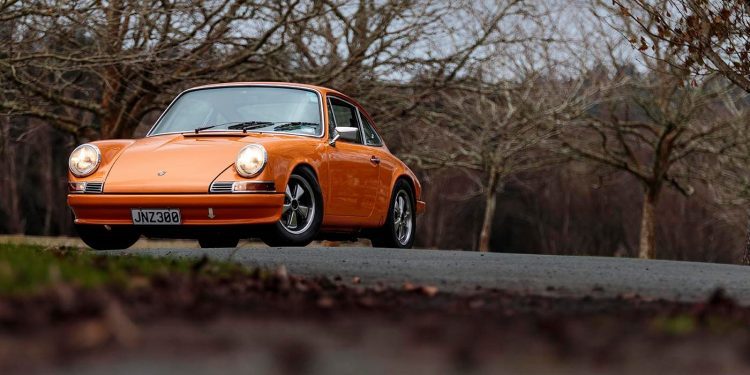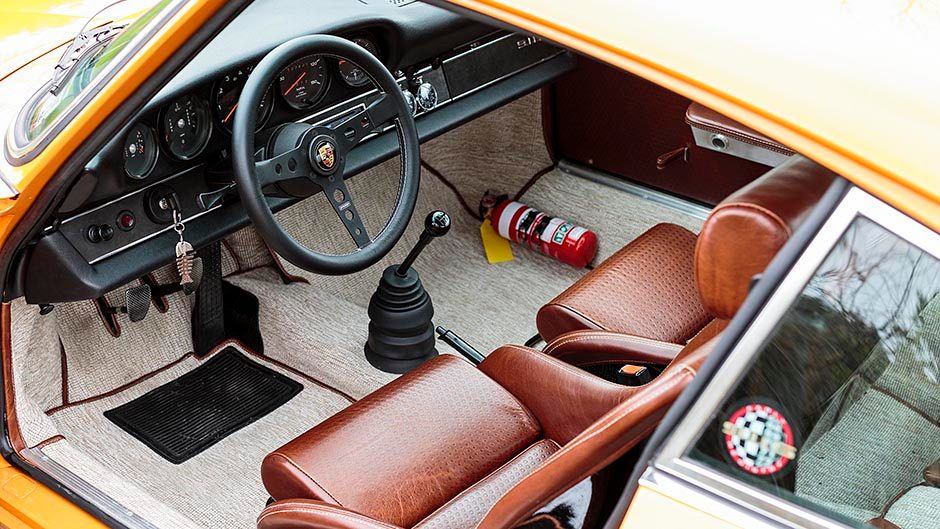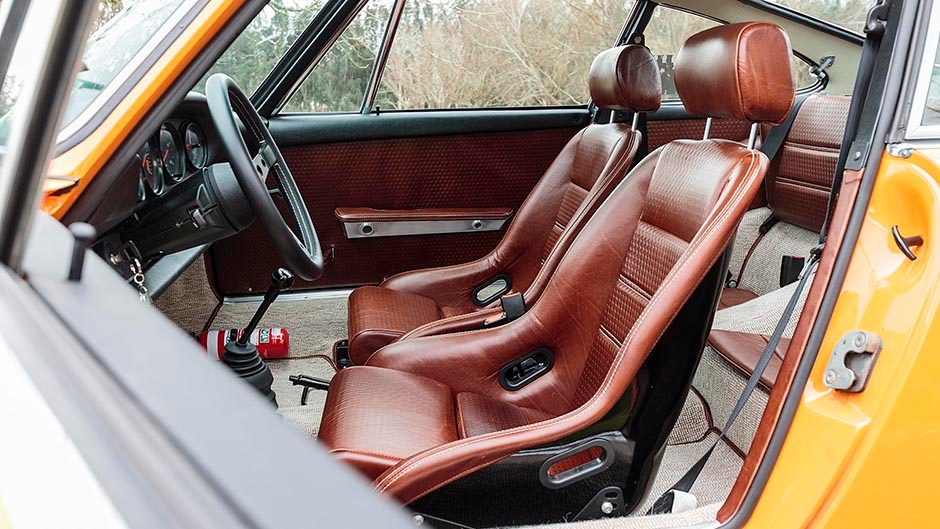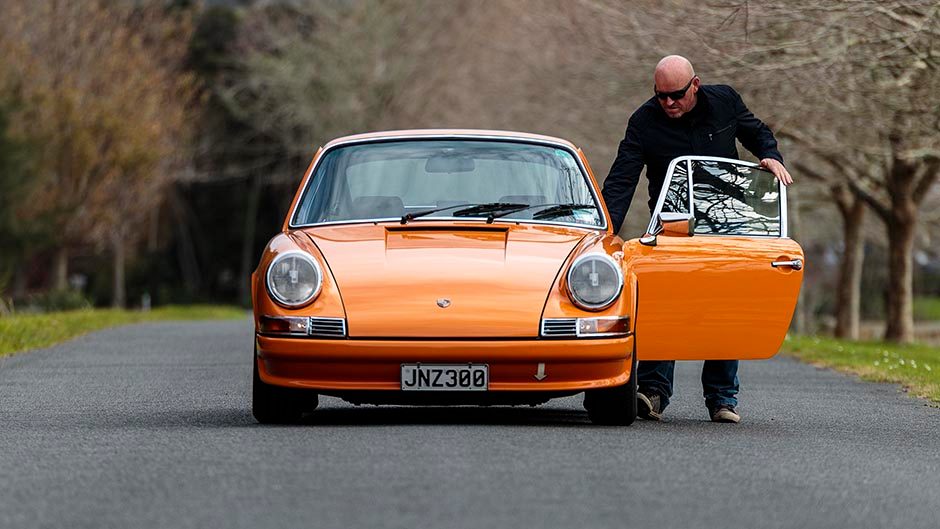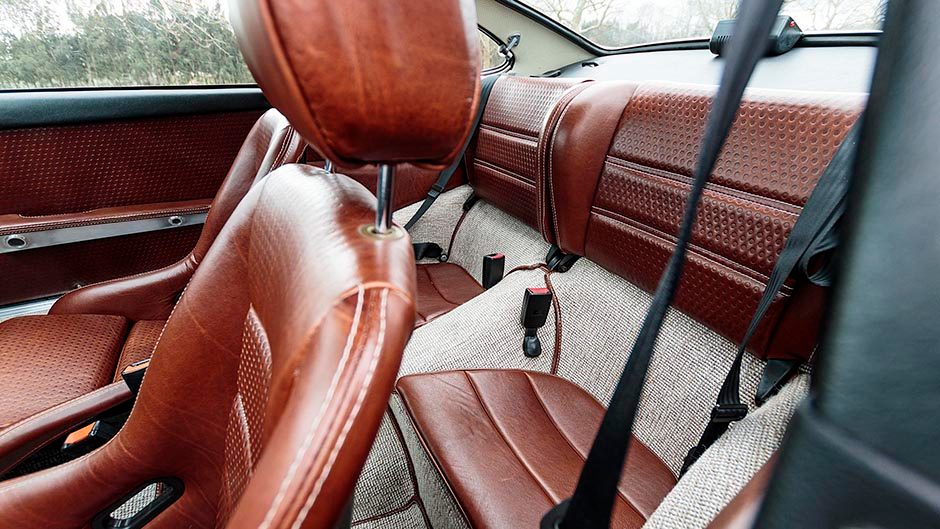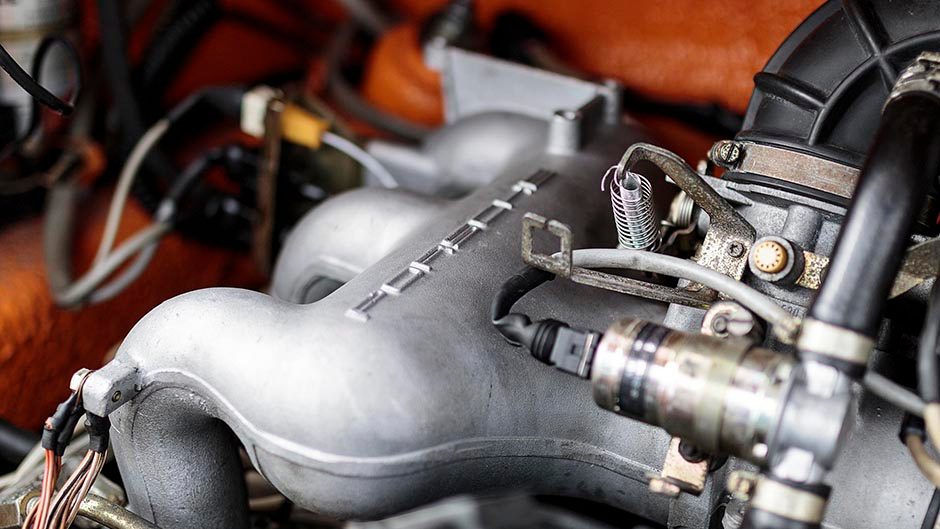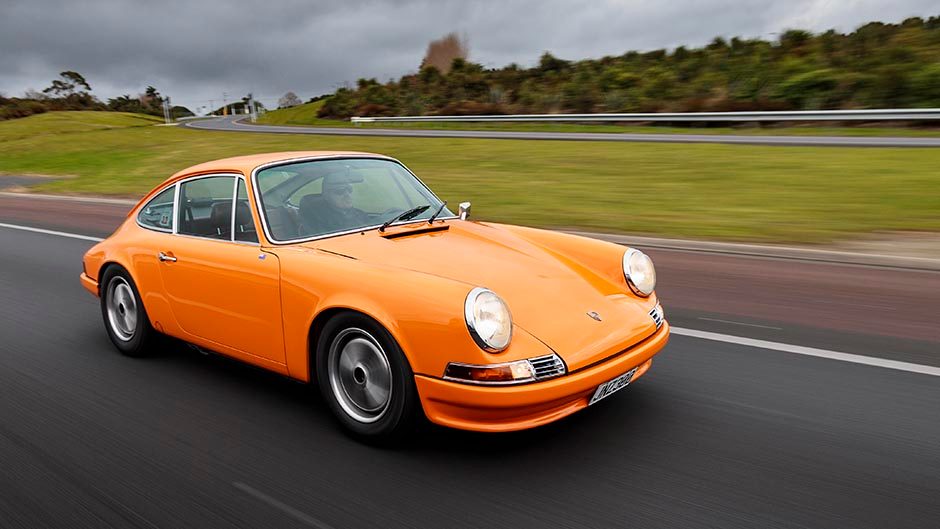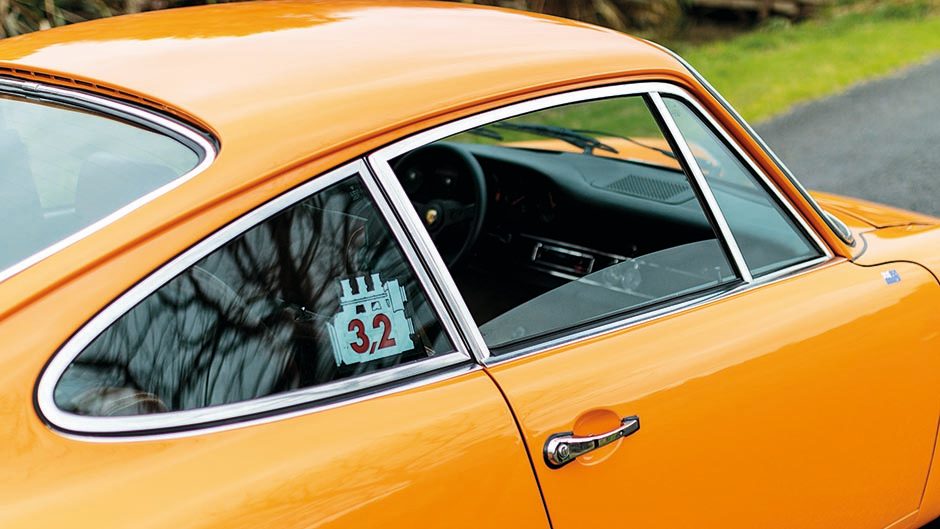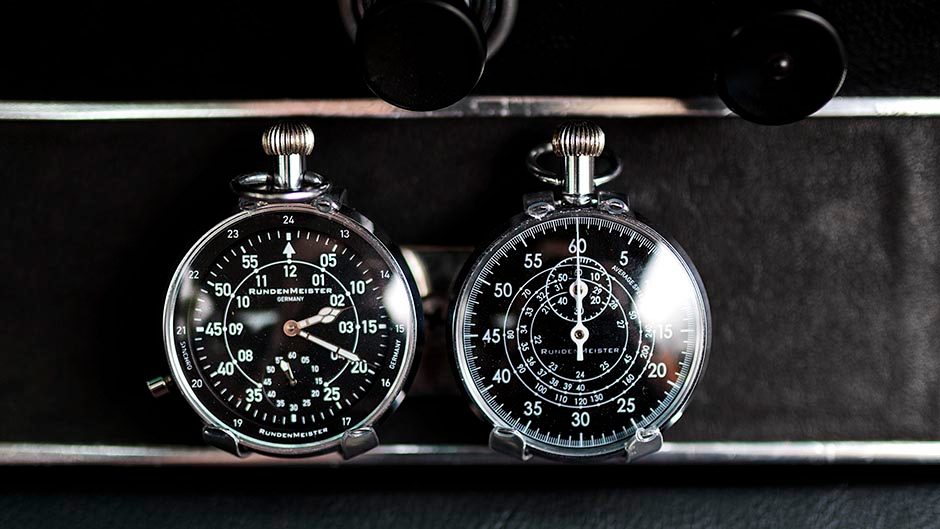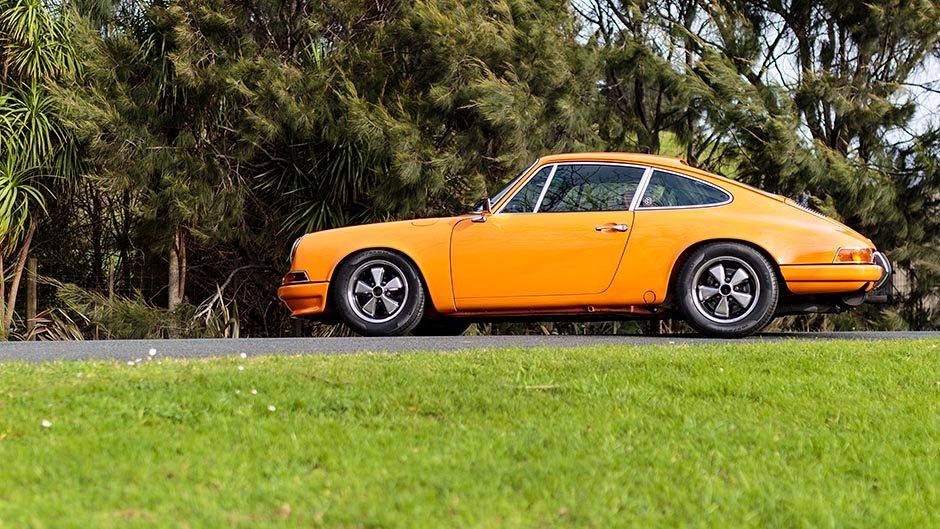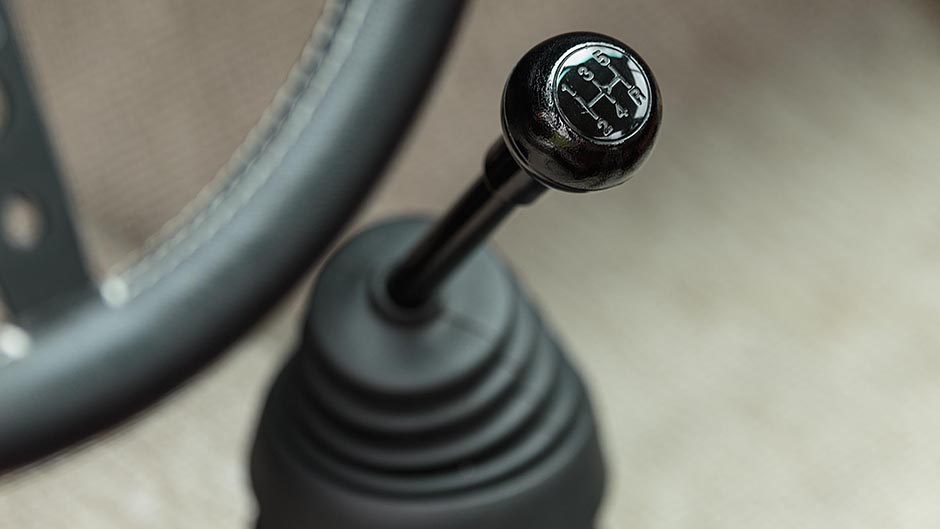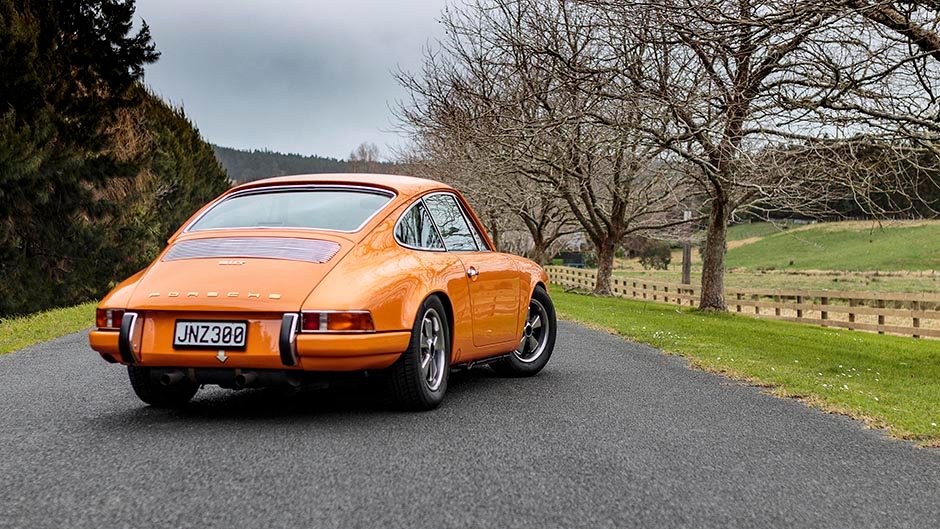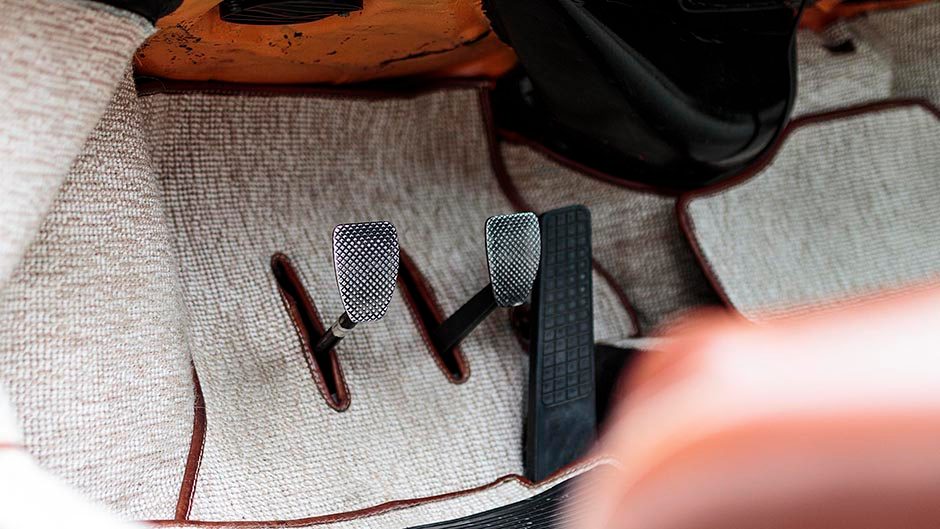1970 Porsche 911t
Words Richard Opie | Photos Richard Opie
One of the most enduring silhouettes in automotive history, the Porsche 911, is at the top of many wishlists. For Dave Burggraaf, a love of the air-cooled models has led him to develop his ultimate early 911 vision.
Aspiration. It could be argued that the driving force behind any classic car acquisition is what the faithful Oxford defines as “a hope and ambition of achieving.” From humble beginnings, a move up through the various echelons of classic motoring is destined to end with the acquisition of the ultimate historic machine.
For Dave Burggraaf, the end game was the ‘long hood’ Porsche 911. In this case it’s a fine example of a 1970 911T. Dave’s something of a serial classic car owner, with “somewhere between 60 and 70” cars having passed through his hands. It follows a childhood fascination with what he describes as “quality cars, particularly German and Italian.”
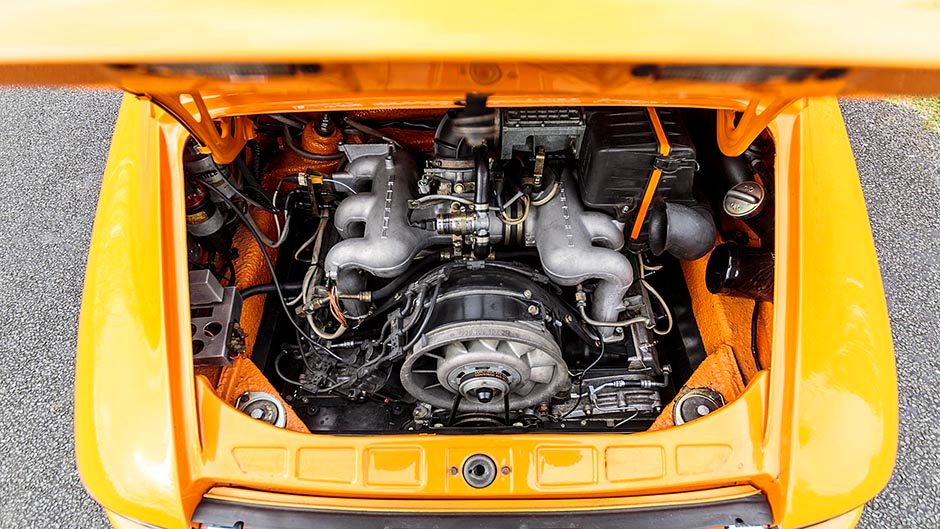
Having a father as a car enthusiast helped shape the formative years. He recalls visits to high-end dealerships in Auckland and becoming mesmerised by the controls, materials, even the smell of the showroom vehicles on display.
His first fascination? Porsche, the German marque so indelibly linked with an air-cooled, rear engine, rear-wheel drive layout. On paper this really shouldn’t have been the ideal arrangement for a car of sporting calibre. An encounter with a mid-1970’s Carrera 3 ignited the 911 passion for Dave, then aged 10, and set him on the course to 911 destiny.
Ownership of Stuttgart’s most iconic export came later in life following a string of vehicles, the first of which was an Alfa Romeo Alfasud Sprint QV. The temperamental Italian set the scene for a series of European hot hatches, vintage Volkswagens and a string of BMWs. Dave’s eye, however, was always on that Porsche prize and his first was a 993 Carrera 2 six-speed manual with Varioram induction.
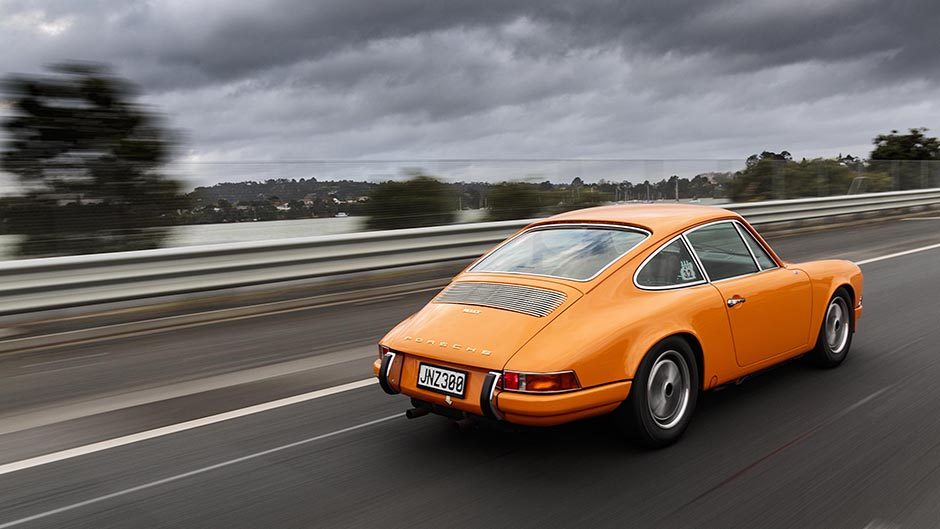
Being a valuable, low mileage car with an impeccable level of originality, the state of this 911 presented a conundrum; should he use or personalise it? Subsequently onsold, a journey into air-cooled 911 purity ensued, commencing with a manual 964 Carrera 2, swiftly followed by a Guards red 911SC, a car he still owns and cherishes.
In September 2013, Dave and a group of like-minded Porsche enthusiasts dropped by Pirongia Porsche specialist Europacific and there Dave first spied the “long-hood” 911 languishing in a workshop corner. A left-hand-drive California import, the 1970 911T found its way into owner Steve Rasmussen’s hands following an altercation with a tree and it was in the early stages of a rebuild. Rust-free and complete, the early air-cooled car presented the ideal starting point for Dave’s dream 911 recreation.
Beneath the non-original gunmetal grey paint, which Dave said did nothing for the pure bodylines of the early 911 silhouette, was a glimpse of the original ‘signal orange’. Sometimes potential makes itself known in the subtlest fashion, and that glimpse of the factory shade was enough to convince Dave the 911T was a worthy investment. Eventually he signed up for a full-blown restoration but not before careful planning commenced.
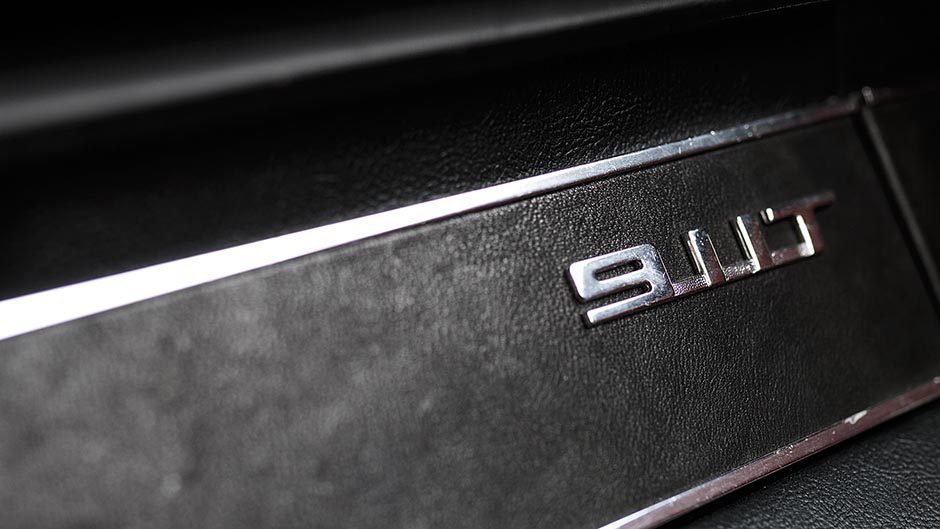
With a professional background in design and engineering, Dave was always going to embark on a structured, considered approach to the subsequent ‘resto-mod’ of the 911. A full nut-and-bolt rebuild was on the cards, justified by the requirement to have a car that was, in his words, “100 per cent, with refreshed engine, suspension, gearbox and systems to eliminate any future issues.”
The twist however, was that the build didn’t play out like a formal restoration. Early 911s aren’t commonly modified in New Zealand, but the prominence of the modded US-based cars of the ‘outlaw’ R-Gruppe, among others, influenced Dave’s plans for his ideal 911 resto.
Research into his particular machine showed that the 2.2 engine and gearbox in the car, while true to the 1970’s origins, weren’t in fact matching number items. While the purist restorer may shy away from such a car, for Dave it marked a point that freed him and the vehicle from “the shackles of originality,” and granted licence to do what he wished with the powertrain.
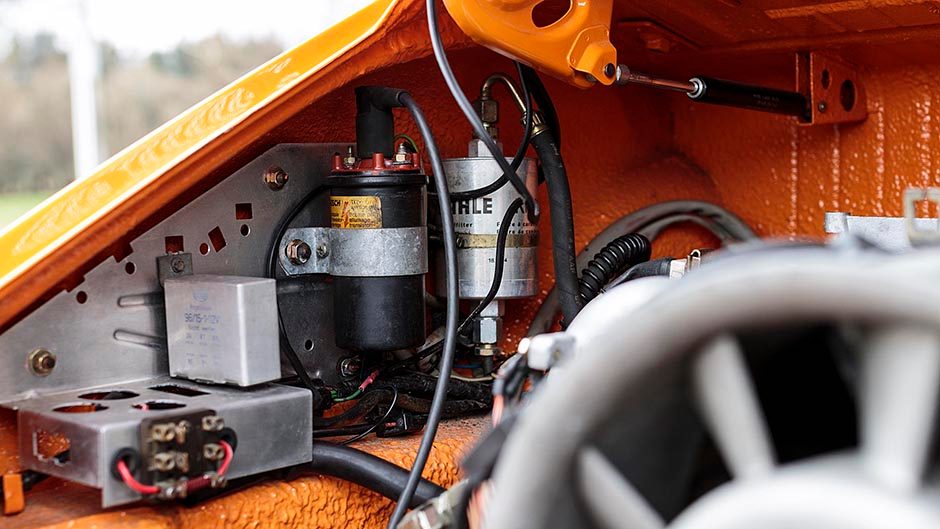
With Steve overseeing the build, the 911T was blessed with the engine and gearbox from a crashed 1985 Carrera 3.2; ironically they were from a car that Dave had investigated buying some years earlier. The Carrera 3.2 engine originates from the last of the ‘original’ or pre-964 Porsche 911s. In addition to an uprated 230-odd horsepower over the earlier 3.0L engine’s 210, the 3.2 marked the transition from carburettors and Bosch CIS fuel injection to a Bosch L-Jetronic system. Adopting the Motronics 2 DME engine management system resulted in a lift in refinement and power.
Regarded by some as one of the all-time great 911 powerplants, the 3.2 fulfilled Dave’s requirement for a torquey, reliable characterful engine. Nestled in the 911’s engine compartment the appearance of the 3.2 is testament to the Porsche engineering ethos, and to Steve’s years of expertise with these cars. There’s a factory-style fit and finish to both the engine and the ancillaries. Induction is courtesy of a K&N set-up, while the exhaust is attached to a rowdy custom-built header and back-box arrangement. That keeps the sensory experience firmly in the 1970s, endowing the 3.2 with a gutsy yet sonorous flat-six tone.
Updating the handling, but keeping that factory-engineered theme, the 911 makes use of later spec parts beneath its equally tidy floorpan. An alloy front crossmember supports a Carrera steering rack, with uprated 19mm front and 25mm rear torsion bars and adjustable Koni shocks. Variable rear spring plates, Carrera front A-arms and alloy rear banana arms finish off the simple-yet-effective suspension package. The car is taken on track regularly so brakes are uprated, courtesy of Carrera 3.2 front and 3-litre rear stoppers, lurking behind classic 15×6-inch ‘deep-6’ forged Fuchs alloys.
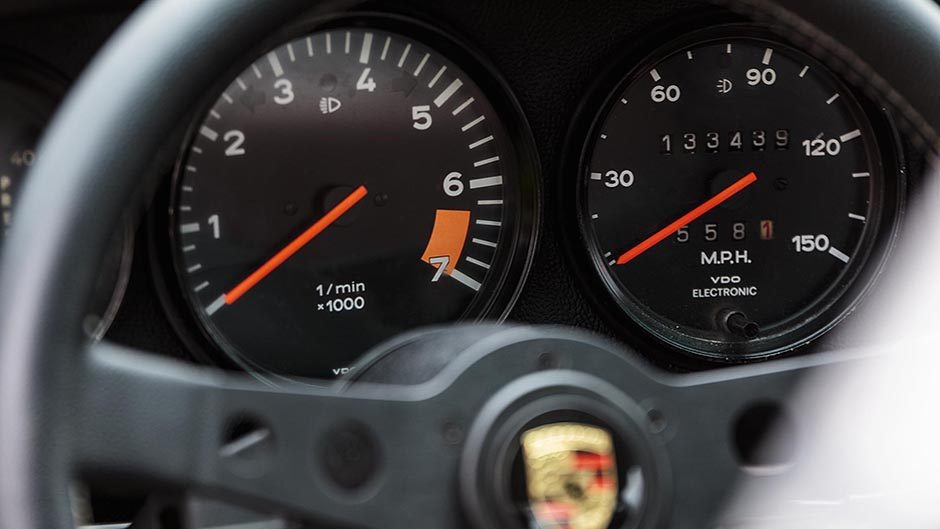
At the time of our photo shoot, the 911’s exterior was comparatively fresh – the car was officially finished on Christmas eve of 2015 and had done a few track days and around 4000 miles of road driving since -but Dave describes the clean finish as one that is “understated and not hung up on perfection”. Unlike the trend toward wider arched RS and ST conversions, Dave’s 911 retains the all-steel narrow body panel work. It was coated by Hamilton’s Monteith and Parker in the period ‘signal orange’ which the 911’s first owner ordered way back in 1970
An array of the original parts, such as the chrome trims and anodised door frames, while not in mint condition, were deemed suitable for the car’s proposed road and track use. The juxtaposing fresh panels and 45-year-old exterior fittings would not be a concern.
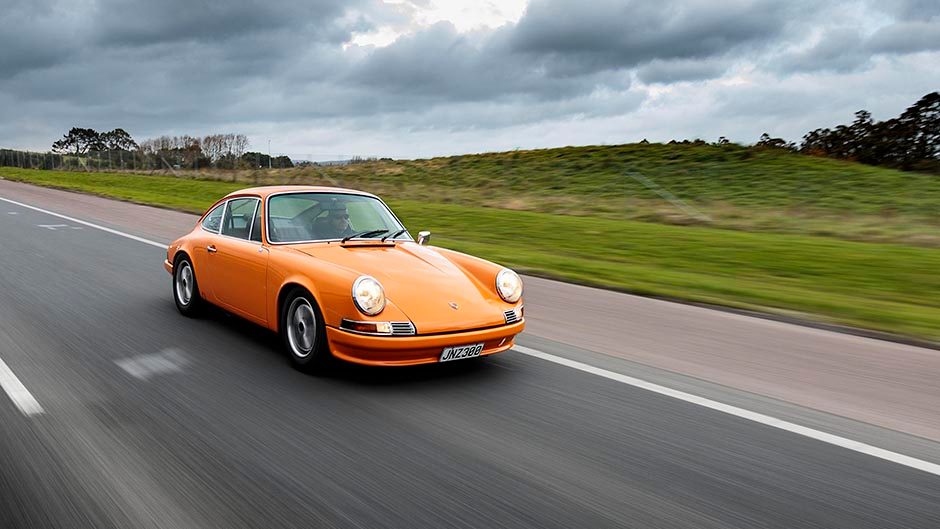
With the exterior representing a restrained take on OEM style, and the mechanical package ensuring an updated usability, the interior strikes a balance between latter day class and modern day functionality. Arguably the finest aspect of the 911, the warm hue of the New Zealand Tasman leather enveloping the door trims and custom fixed back buckets, contrasts with the German squareweave oatmeal carpet. It blesses the 911 with an ambience “somewhere between lightweight stripped out hotrod, and gentleman’s club.” Dave went as far as machining his own aluminium embossing plates, giving the hide a bespoke texture. Fabricated raw aluminium door furniture also sets the 911’s interior apart, co-existing with the standard issue five-dial Porsche dash. The finishing touch is a pair of classic Rundenmeister rally clocks, offset to the passenger’s side.
With 230hp on tap and a kerb weight of only 1015kg, Dave’s 911T achieves an authentic 911 experience as per the brief; simple, reliable, fun and not too precious. It also represents, for Dave, the pinnacle of his 911 aspirations. He admits he has a tendency to move cars on too frequently but feels this 911 is different. This is the car that, in his own words, he hopes still to be driving, and using day to day decades down the track.


